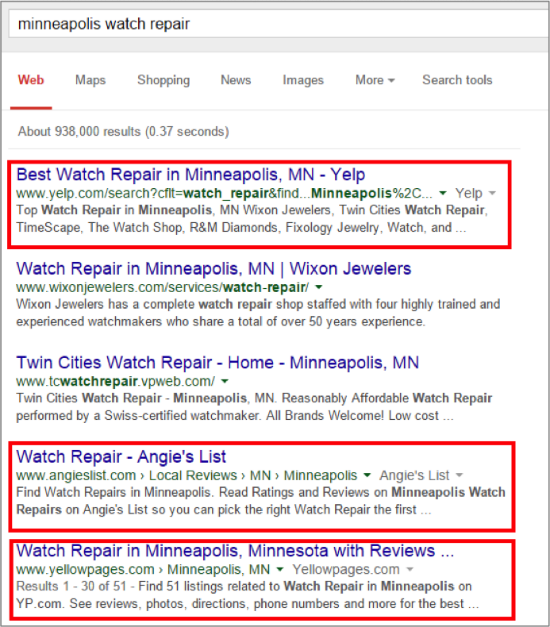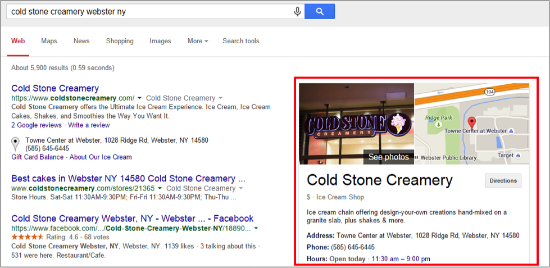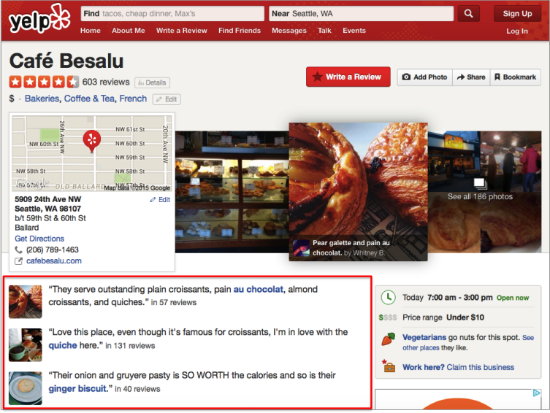
It’s a restaurant owner’s worst online nightmare – someone is searching for a restaurant in your neighborhood and your business doesn’t appear until page 7 of the search results, right below the creepy deli/gas station hybrid three towns over.
According to a 2014 Google study, 50% of mobile users are most likely to visit a storefront within a day of conducting a local search online. Over the next few years it’s very probable that these numbers will only continue to increase. With conversion rates like these, it’s clear that there are revenue driving benefits to optimizing your local presence so that you can be seen online by more of your potential customers.
Small business owners often wear many hats: accountant, business strategist, general manager and marketer. I’d venture to say that search engine specialist likely isn’t at the top of your resume, and it doesn’t need to be if you follow these simple steps to ensure that your local business’s online presence is off to the right start.
#1 – Lock Down Local Directories
Take a few minutes to research what local directories (ex: Yelp, SuperPages, YellowPages, UrbanSpoon, DexxKnows, etc.) are ranking on page one of Google for the keywords you are targeting as part of your SEO strategy. Next you’ll want to identify the top five directories, uncover whether your business is listed on them and take steps to claim the listing or create a new listing for each.
Below is an example of the directories that appear for a local search for “watch repair”. If you’re a watch repair shop in Minneapolis, but aren’t listed on these local directories, or are categorized incorrectly, your business won’t be presented as an option on these sites.

Tips for claiming and optimizing your local business listings:
- Standardize your company name. Take the time to ensure your business name is correct and consistent across all listings. This solidifies signals to the search engines that help boost brand-name based rankings.
- Opt for a local phone number. List your company’s local phone number instead of a toll-free number. Google prefers to see a local number that is consistent with your geographical location.
- Include keywords. Ensure 1-2 of your priority keywords are integrated into the business description. Priority keywords are generally centered on your main products or services. If you’re a Pizza Hut in Denver, your priority keywords would most likely be “denver pizza delivery” or “denver pizza”.
- Utilize imagery options. Adding an appropriately sized logo and images of your business will ensure your listings appear official and polished.
#2 – Optimize Google Local Listing
Despite the upcoming changes to Google+ as a social platform, your company’s Google Local listing is still the most important local listing to claim and optimize. This page appears in company-related local searches and in Google Maps results.

Tips for claiming and optimizing your Google Local listing:
- Optimize your business description. Take advantage of Google’s option to hyperlink text within the business description area. Link to your highest priority services pages or products on your website.
- Be strategic with your login credentials. If you have a company YouTube account, claim your listing using the same Google login. This will allow you to easily feed YouTube videos into your Google Local listing.
- Upload a high quality banner image. A poor quality image that is stretched or blurry will reflect on the quality of your brand. Aim for an image that’s 2120 x 1192 pixels.
#3 – Encourage Customer Reviews
Customer reviews have a direct impact on local listing search rankings. Moreover, when 73% of searchers say that positive reviews make them trust a local business more, it’s well worth the effort to ensure your company offers the third party validation that potential customers are looking for.

Tips for collecting online reviews:
- Not all at once! Collecting too many customer reviews within a short time period will immediately raise red flags on local directories like Yelp and Google. Slow and steady wins the race.
- Integrate review requests into your service process. Add “Review us on Google” to your receipts. Add “Request a review” to your service staff’s checklist when serving a satisfied customer. Integrating these requests into the service workflow will ensure a constant stream of user reviews.
- Accept the good with the bad. You’re going to have a disgruntled customer, and they’re going to leave a bad review – it’s just part of the business. Know that one bad review immersed in a collection of positive reviews is likely to be dismissed by users.
Google allows business owners to respond directly to reviews. Use this feature to draft an attentive, respectful response that offers an apology and helps to remedy their concerns. Potential customers will appreciate your willingness to make things right for unhappy customers.
#4 – Integrate Keywords into Website Meta Tags and Content
Yes, you can do this. No, you don’t need to be a code wizard.
If you have a content management system that allows you to edit the content on each webpage, more than likely there’s an option to specify a meta title and description for each page. When you’re a local business with a service area centered on a large city, adding the city name to your meta titles, descriptions and content will help your ranking for city-related searches.
Here’s an example of how you could incorporate the city name into the meta title of a homepage:

You should also make sure that your target city is mentioned within the actual content of your website. Include a sentence like this in an introductory paragraph on your homepage.
![]()
How Optimized is Your Local Presence?
The tips above are the bare basics of local optimization. Although they just scratch the surface of a comprehensive optimization strategy, they serve as an achievable starting point for local business owners that aren’t sure how to approach the topic of local search optimization.
Think you’re getting the hang of this? Take your optimization to the next level by aligning your keyword objectives to your content lifecycle by learning How to Incorporate SEO and Influencer Content.
Header image via Shutterstock


